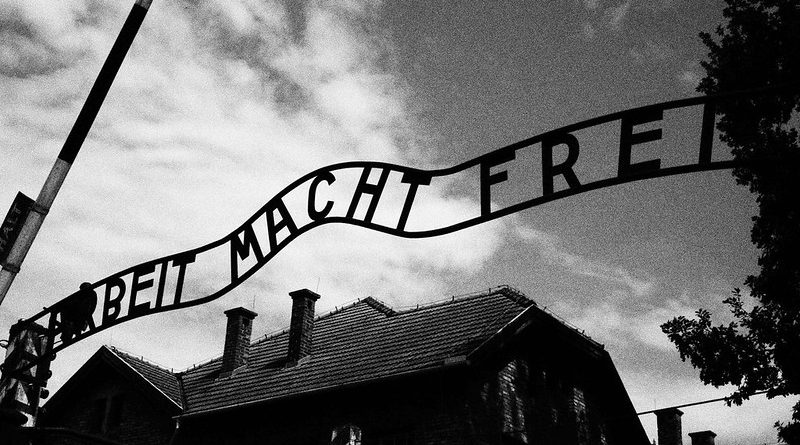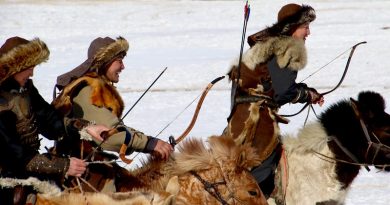The Nazis & The Holocaust
Who Were The Nazis?
The Nazis, abbreviated from the National Socialist Germany Worker’s Party, rose from the civil unrest in the interwar years in Germany. Spearheaded by Adolf Hitler for the majority of its lifetime, the Nazi Party at its core was fascist in nature, forming from the various nationalist paramilitary movements such as the Freikorps. They were focused on establishing a strongly united ‘people’s Community (Volksgemeinschaft) comprised of only those they considered to be racially pure. These racially pure individuals were known as ‘Aryans’. The notion of community became increasingly obscured by the highly racist views of the Nazis, which remains the party’s defining attribute.
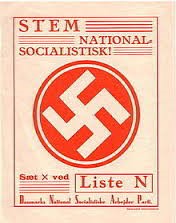
Indeed, racial minorities, homosexuals, the mentally and physically disabled, political dissidents were all treated with hostility and barbaric brutality. It was the Nazis’ treatment of the Jews however for which they are most notorious. The Party grew increasingly anti-Semitic over its lifetime, with powerful figures such as Hitler blaming the race for many of Germany’s troubles. While the Nazis fell from political dominance towards the end of the Second World War, their ideology of Nazism remains present in a number of grassroots right-wing groups across the world.
Adolf Hitler
While not the chief innovator of Nazism, Adolf Hitler’s name has become almost completely synonymous with the ideology. Indeed, as the leader of the Nazi Party for nearly the entirety of its existence, he played a more influential role than any other figure in directing its historical course. Of Austrian origins, Hitler was a veteran of the First World War, having enlisted out of national duty after a failed career as a painter.
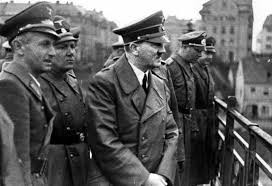
It remains ambiguous to ascertain as to when he developed the racist views, which lead to his involvement with the Nazi Party, although it was believed to have been during his time as a young man in Vienna, which was dominated by racial prejudices in the pre-war years. Following his discharge from the army on medical grounds, he settled in Munich, where he became increasingly involved in grassroots right-wing politics, influenced by figures such as Dieter Eckhart and Anton Drexler, who greatly shaped Nazism. Hitler gradually ascended the ranks of the NSDAP, his oratorial abilities earning him increasing levels of support. He wove populist ideas with the use of scapegoats such as the Jews for Germany’s problems. Hitler eventually usurped control from the Weimar Government, who had been in power since the end of the First World War and became Germany’s Chancellor in 1933. Gradually removing any limits from absolute control, Hitler eventually ushered in a drastic reshaping of the German nation. He rearmed Germany, which had been stripped of its armaments in reparation for its role in the First World War. He also went about the annexation of various European territories, most notably the ‘Anchluss’ or reunification with the country of Hitler’s birth-Austria. While the British went about the policy of appeasement for the majority of this period, the annexation of Poland was a key trigger in the Second World War. Fighting unfolded across the globe for six years. By the end of 1944, Nazi Germany was on the defensive from both the Allied Nations (Britain, France and the US) and the Red Army (the USSR). Recognising the Red Army as the more dominant military force, Hitler instead focused his attentions on the Allies. This proved costly, as by spring of the following year the Red Army had completely surrounded Berlin. With defeat imminent, Hitler and his long-time lover Eva Braun committed suicide in their safety bunker, the Nazi Party collapsing entirely shortly thereafter. Indeed, despite his defeat, Hitler’s legacy of hatred remains intact as one of the most widely reviled figures in history.
Goebbels, Himmler & Goering
While Hitler was doubtlessly the most key figure in the Nazi Party, a number of his associates played pivotal roles in the movement as well, helping enforce the ideology’s racist oppression of non-Aryans and propagate the iron-fisted rule of the Nazis. Perhaps the most well-known of these figures was Joseph Goebbels, arguably the most trusted member of Hitler’s inner-circle, known for his unwavering devotion to the Fuhrer. Goebbels’ chief responsibility was as the head of the Propaganda Ministry, tasked with ridding the nation of any non-German influences. Among the first and most notable of these measures were the widespread book burnings, which were a symbolic and physical act of Nazi Germany’s breaking away from any foreign and purportedly ‘corrupt’ influences. In his position, Goebbels saw that all aspects of media, arts and information remained under Nazi control, thus virtually eradicating freedom of speech and expression, whilst strengthening the Nazis’ influence in nearly all spheres of life. A highly anti-Semitic figure, Goebbels was a key figure in organising violence against Jews from the beginning, orchestrating the boycott against Jewish businesses, which lead to the outbreak of Kristallnacht (Night of the Broken Glass) against the Jews. Goebbels assumed a number of additional roles during the Second World War, rousing the Nazis’ supporters with his oratorial abilities. As possibly Hitler’s closest associate, he was named his successor following his suicide. However, this was short lived. With defeat remaining imminent, Goebbels poisoned his family before committing suicide himself a mere day after Hitler’s suicide.
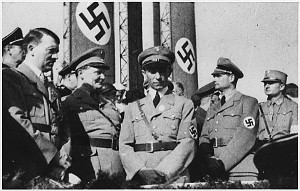
Few figures played a more direct role in the Holocaust than Heinrich Himmler. The director of the SS, the Nazi Party’s brutal paramilitary force, Himmler transformed the group into an effectively organised battalion of over a million men. Favoured by Hitler for his organisational abilities, he became one of his most trusted associates. As the leader of the Ministry of the Interior, Himmler oversaw the direction of Nazi Germany’s police and security forces, most notably the brutal secret police-the Gestapo. As the Holocaust was enacted, Himmler was tasked by Hitler with forming the Einsatzgruppen, overseeing the facilitation of concentration camps across Nazi territory. By extension, Himmler oversaw the genocide of over six million Jews in addition to several other minorities in the brutal Concentration Camps. Thus, Himmler’s role in the barbaric atrocities of the Nazis is arguably second to only Hitler himself. Realising the inevitability of defeat, Himmler began diplomatic discussions with the Allies against Hitler’s orders and was subsequently removed from power and arrested. Following Hitler’s suicide and the downfall of the Nazis, Himmler was captured by the British military, taking his own life while in custody. Hermann Goring was another figure within Hitler’s inner circle of great importance and influence. A hero in the Germany air force during the First World War, Goring’s responsibilities in the Nazi Party were primarily involved with the military. His most notable contribution to the Nazis was his establishment of the Gestapo, the secret police, who upheld control of the civilian population through fear and intimidation. Additionally, the chief instructor of the Four Year Plan, he was responsible for the German economy as World War II drew nearer. However, by 1940, his powers steadily declined. Having already handed control of the Gestapo to Heinrich Himmler, his chief responsibility for the majority of the Second World War was leader of the Luftwaffe-the German Air
Force. His standing decreased due to a succession of military failures, particularly those of the Luftwaffe. Following this, Goring retreated from the Nazi hierarchy up until hearing of Hitler’s plans to end his own life. Appealing to Hitler by telegram, he requested to be his successor, which was interpreted as an act of treason, leading to his arrest. Following the end of the war, Goring was one of the key Nazi figures convicted of war crimes at the Nuremberg Trials, only to poison himself before the sentence could be executed.
The SS
Translated literally as the ‘defence corps’, the SS was one of the most brutal and powerful organizations within the Nazi Party. Initially a small squadron tasked with protecting key figures within the NSDAP, it was revitalised under Heinrich Himmler, gradually evolving into one of the most powerful tools of Nazi oppression. Comprised of over one million employees at its peak, the SS became synonymous with the Nazi ideology, enacting many of the Party’s heinous war crimes during the Second World War, and by extension the Holocaust. Having gradually assumed control of all other police and security forces over its existence, the SS subsequently assumed a variety of violent responsibilities. Thus, the organization was divided into two central groups-the Algemeine- SS (General SS) and the Waffen-SS (Armed SS). The former would generally handled local and racial matters, with the Gestapo being under their control. The latter’s responsibility included regulation of the concentration and death camps, which began to sprout up as the Holocaust was set into motion. As an auxilliary tool of the Nazis’ violent impact on Europe, they were recognised as a criminal organization by the International Military Tribunal and dissolved at the end of the Second World War, all but extinguishing their reign of terror.
Why Persecute The Jews?
While the heinous racial hatred and genocide enacted by the Nazis throughout the entirety of their time in power extended to a number of minorities, no race was treated with quite as much intense hatred as the Jews. It is difficult to determine to what extent this virulent strain of anti-semitism was directed by Hitler himself, who was highly vocal about his hatred towards the Jews. The most commonly accepted explanation for the eruption of anti-Semitism in Nazi Germany was due to the resentment towards Jewish success in the interwar period, when Germany was in economic and social turmoil. The Nazis perceived the Jews as having an increasing monopoly on German cultural and professional life. Subsequently, the Jews became a scapegoat for the ills of the German people, their relative success becoming misconstrued as being detrimental to the success of Germans. As the Nazis continued to consolidate power, their grounds against the Jews became increasingly absurd, with eugenics factors playing increasing importance. Howeve of the most horrifying aspects of the Nazis’ dark legacy wer, the origins of the Nazis’ anti-Semitism doubtlessly lay in resentment over Jewish success in the interwar period.
Concentration Camps
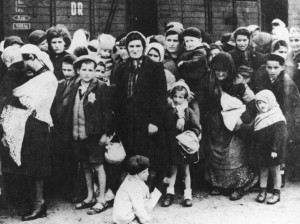
Onas their implementation of concentration camps. Initially constructed to imprison and torture political opponents at the beginning of Hitler’s tenure as Chancellor in 1933, they eventually complemented the Nazi disturbing racial policy and eventually imprisoned the ‘racial undesirables’ under Nazi rule. With Heinrich Himmler and the SS now in control, they exhibited unprecedented degrees of brutality towards their subjects. Holding 45,000 during their initial construction, they held over 700,000 prisoners at their peak in the beginning of 1945. They had a number of depraved functions, being centrally utilised to ‘punish’ racial minorities with gruelling and inhumane manual labour, but also to hold prisoners of war. There remains a distinction however between the concentration camps and the extermination camps, which were introduced later.
The Final Solution
Indeed, the extermination camps were established following the Nazis’ decision to entirely extinguish the Jewish population under Nazi control through genocidal measures. This decision, commonly termed ‘The Final Solution’ was a key turning point of the Second World War, leading to the Holocaust, one of the most definitive and violent events of modern civilization. There is some ambiguity over the origins of the Final Solution, yet most agree that it was a decision of much pre-mediation rather than a more spontaneous decision. Once enacted, the Final Solution saw millions of Jews killed in the newly-established Extermination Camps. Some of which, such as Treblinka served the dual function of a Concentration Camp, but the majority functioned for the sole function of extermination. The most notorious of these was Auschwitz, in which 1.1 million people were killed, primarily Jews. Over 3 million people were killed in the gas chambers of these death camps, which used poisonous chemicals carbon monoxide and Zyklon B. The Final Solution ushered in the Holocaust, the worst and most enduring of the Nazis’ many atrocities.
End Of The Nazis
Despite the widespread control and oppression the Nazis exhibited over its subjects through fear and intimidation, it was the Second World War it triggered itself, which proved to be its great downfall. Indeed, while there are a number of key factors to consider, in short, the ruthless efficiency with which the Nazis ascended to power became increasingly overburdened by the economic inviability of the Second World War and the Holocaust. Despite initial success in Western Europe, during which the Nazis annexed parts of France and Belgium, they had accumulated too many enemies. The Allied counter-offensive, strengthened by American military support in 1944, saw the Nazis control of Western Europe gradually extinguished.
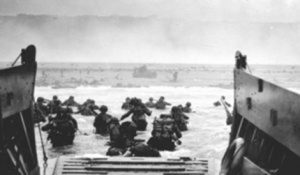
Furthermore, the formidable Red Army of the Soviet Union pressured Nazi Germany from the East following an ambitious invasion of the USSR in 1941. Trapped by both sides, both the Allies and the Soviets invaded Nazi Germany at the beginning of 1945, significantly weakening the regime as they did so, liberating the camps. With defeat imminent, Hitler committed suicide. Although Goebbels briefly succeeded him, he too committed suicide a day later. Having lost its leadership, total Nazi surrender followed a week later.
Main Image: tsaiproject, Arbeit Macht Frei, Flickr Creative Commons

